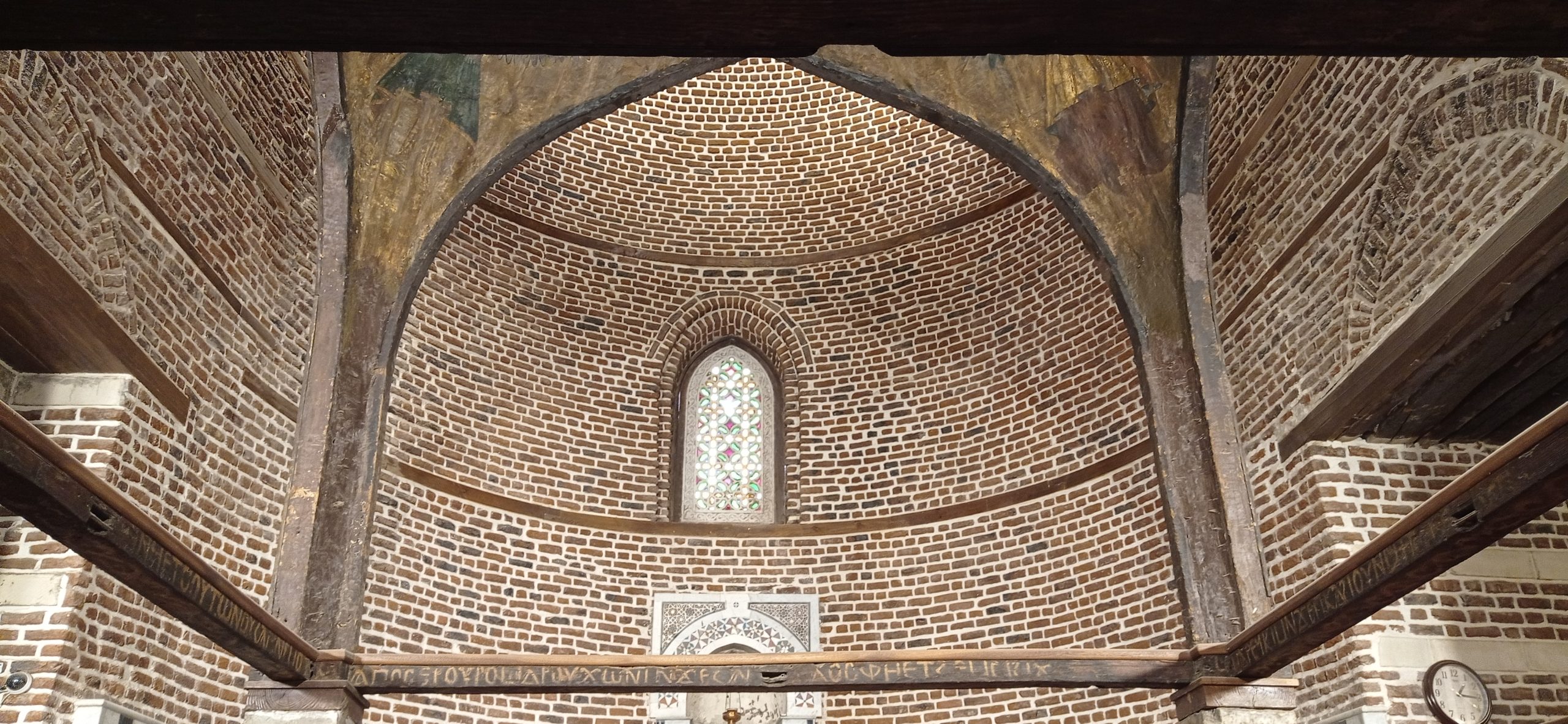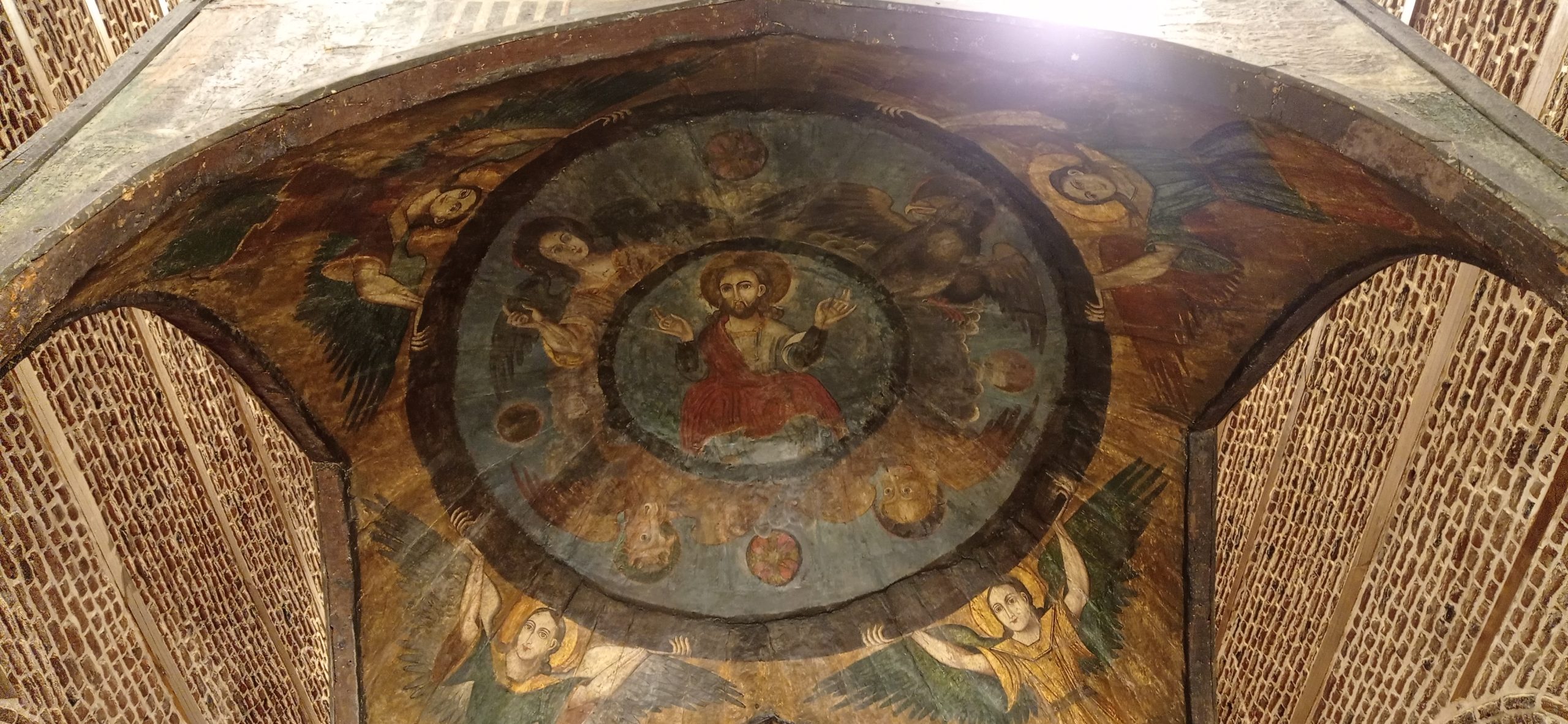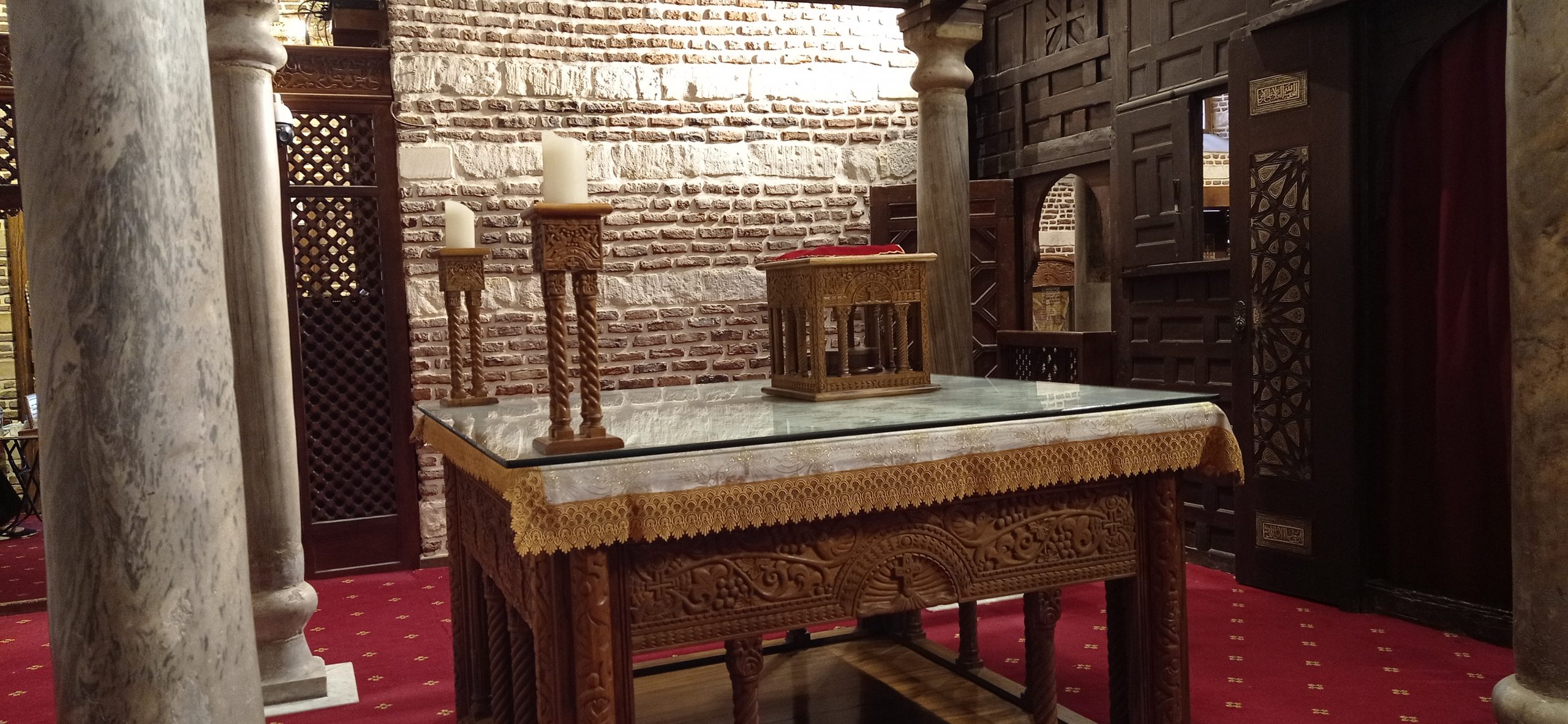Earlier, the Roman soldiers built a church above Abu Serga Cave and named it after two saints of high stature to them, namely Saints Sergius and Bacchus, who were martyred during the reign of Maximian (280-305 AD). This church was later known as the Abu Serga church.
The church remained the seat of an episcopal chair from the fourth century until the thirteenth century, and it was known first as the Babylonian chair, then the Fustat chair, then turned into the Egypt chair.
In another saying, it is mentioned that the church was established at the end of the seventh century by Athanasius, who came from Syria, influenced by the story of Saints Sergius and Bacchus, so he built this church.
The church is built in the basilica style, and its dimensions are 27 m in length, 17 m in width and 15 m in height. The floor of the church is about 3.90 m below street level. The entrance leads to the nave of the church, and from there to three Sanctuaries.
Below the sanctuaries is the ancient cave where the holy family stayed.
In the nave there are columns with Corinthian capitals dating back to the fourth and fifth centuries AD.
A mural dating back to the thirteenth century AD was discovered in the southern sanctuary of the church, and there are many archaeological icons on it.
This church is located in the middle of the Wax Palace or the Roman fort, next to the Coptic Museum.






At the end of the Umayyad dynasty, the church was exposed to a fire when Caliph Marwan II burned Al-Fustat – the last caliph of Bani Umayyah (744-750 AD) and it was restored by Minister Youhanna bin Yusuf, known as Ibn Al-Abah – the secret keeper of the Fatimid Caliph Al-Muntasir in 1102 AD.
In the year 768 AD, Caliph Marwan bin Muhammad released the patriarch, Anba Michael I (No. 46), so he went to the church of Abu Serga and performed a prayer of thanksgiving there.
In the year 859 AD, the pious Patriarch Anba Shenouda, the fifty-fifth, was elected and he was the first patriarch to be ordained there.
Abu Serga Church is considered to have a prestigious character at that time, as evidenced by the fact that most of the patriarchs were elected from it in the old eras until the beginning of the twelfth century AD, when the Patriarch Anba Makarios was elected in 1102 AD.
The church currently contains the bodies of Saints Sergius and Bacchus and the martyr monk Bashnnouna, whose body was discovered in 1991 AD under the noble during the restoration of the church, and there are many archaeological icons that adorn its walls.
The Coptic Museum preserves some important antiquities from Abu Serga Church, including the oldest wooden altar made from walnut wood known in the history of ancient churches, as well as Corinthian capitals, dating back mostly to the sixth century AD.











I loved even more than you will get done right here. The picture is nice, and your writing is stylish, but you seem to be rushing through it, and I think you should give it again soon. I’ll probably do that again and again if you protect this walk.